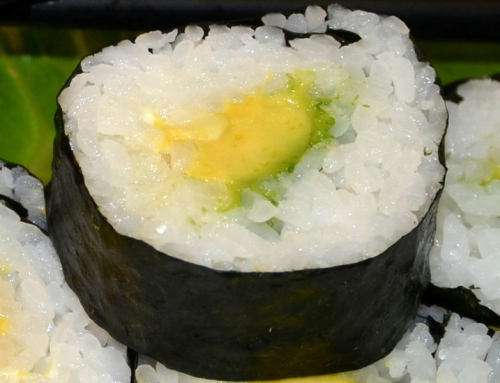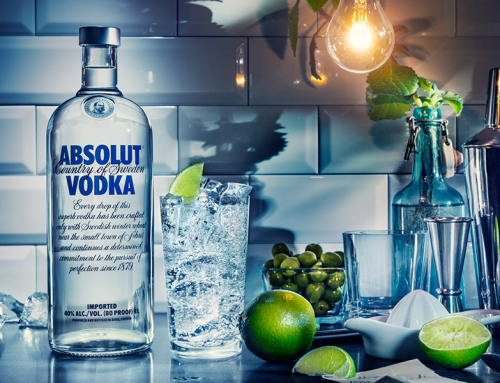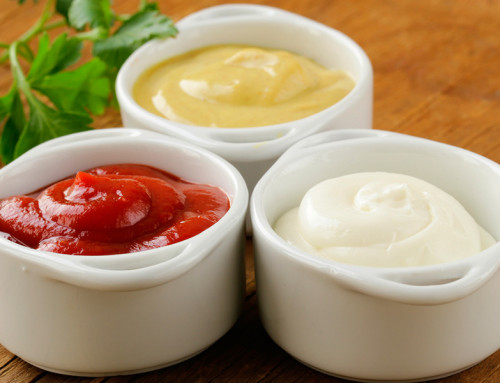Calories in mushrooms depends on the mushroom. Interestingly, it appears that the calories increase by cooking mushrooms, but that is an illusion. Mushrooms tend to “cook down” and the water is removed during the process, so that a cup of cooked mushroom’s tends to contain more mushroom than a cup of raw mushrooms. The nutrients are also said to “increase” in cooked mushrooms, but that is due to the breakdown of the cell wall during cooking, the nutrients are more concentrated, so for the same volume (not weight) you get two, three, or even four times the nutrients than you would from raw mushrooms.
Here are some of the calorie counts for the more popular mushrooms, though in many cases, it was not specified if they were raw or cooked. As you can see, mushrooms are a fantastic food for weight-loss diets.
Generic Mushrooms
- Raw, 100 g = 13 calories
Baby Button Mushrooms
- Raw, 100 g = 20 calories
Regular Button Mushrooms
- Cooked, 1/2 cup, pieces and stems = 21 calories
White Mushrooms
- Raw, 100g = 21-22 calories
- Raw, 1 small = 2 calories
- Raw, 1 medium = 4 calories
- Raw, 1 large = 5 calories
- Raw, 1 oz or 28g = 6 calories
- Raw, 1 cup, pieces/slices = 15 calories
- Raw, 1 cup of whole = 21 calories
- Steamed, 100g = 28 calories
- Steamed, 1 oz or 28g = 8 calories
- Steamed, 1 cup of chopped/diced = 44 calories
Portabello Mushrooms
- Grilled, 100 g = 29 calories
- 100 g = 22 calories
- 1 whole (84 g) =18 calories
- 1 cup diced (86 g) = 19 calories
Crimini Mushrooms (Cremini or Brown Buttons)
- Raw, 100g = 27 calories
- Raw, 1 cup, pieces or slices = 19 calories
- Raw, 1 cup, pieces or slices = 19 calories
- Raw, 1 cup, pieces or slices = 19 calories
Brown Mushrooms
- 100 g = 22 calories
- 1cup, whole (87 g) = 20 calories
- 1 cup, sliced (72 g) = 16 calories
Chanterelle Mushrooms
- 100 g = 38 calories
- 1 whole = 5 calories
- 1 cup (54g) = 21 calories
Chinese Wood-Ear Mushrooms
- Dried, 100 g = 296 calories
Enoki Mushrooms
- 100 g = 37 calories
- 1cup, whole (64 g) = 23 calories
- 1 cup, sliced (65 g) = 24 calories
Morel Mushrooms
- 100 g = 31 calories
- 1 whole = 4 calories
- 1cup (66 g) = 20 calories
Maitake Mushrooms
- 100 g = 31 calories
- 1 cup, diced, (70 g) = 22 calories
Oyster Mushrooms
- 100 g = 33 calories
- 1large, whole (148 g) = 49 calories
- 1 cup, sliced (86 g) = 29 calories
Shiitake Mushrooms
- Cooked, 1 cup pieces (145 g) = 81 calories
- Cooked, 100 g = 56 calories
- Stir-Fried, 100 g = 39 calories
- Dried, 100 g = 256 calories
- Dried, 1 whole = 11 calories
- 1 whole (19g) = 6 calories
- 1 cup (87 g) = 29.58 calories
Straw Mushrooms
- Canned, 1 cup. Drained solids = 58 calories (Sodium 699 mg, 29% RDA, Calcium 2%, Iron 14%)
For dehydrated mushrooms, the drying process increases the nutrient concentration by decreasing the water content, as drying also breaks down the mycochitin cell walls, but the calories remain the same.
- Mushrooms provide a large amount of nutrients and flavor for very few calories so are great for diabetics as well as perfect as a weight loss food. In fact, mushroom consumption has been associated with a higher diet quality and improved nutrition.
- Mushrooms are a great source of protein, copper, potassium, zinc, selenium and B vitamins such as riboflavin, and niacin, enzymes and vitamin D2. They offer decent amounts of potassium, selenium, copper, and zinc, and they are a great source of dietary fiber.
- They are also an excellent source of iron, with some varieties containing up to 14% of the recommended daily requirement.
- Mushroom’s are low in both saturated and unsaturated fat and also low in sodium.
- Mushrooms contain a natural and super-powerful flavor enhancer called glutamic acid, which is the same amino acid that is found in MSG (monosodium glutamate).
- Another powerful phyto-chemical antioxidant that is not destroyed by cooking is L-ergothioneine. It is plentiful in portabello and crimini mushrooms.
- Cooked enoki, oyster, shiitake, pine, and straw mushrooms, as well as the more popular button mushrooms, have anti-tumor activity.
- Wood-ear mushrooms have blood-thinning properties that may help prevent the dangerous clotting that contributes to heart disease.
- Mushroom’s also contain antioxidants that are unique to mushrooms, one of which is ergothioneine, an unusual sulfur-containing derivative of the amino acid, histidine, and as such is considered to be a “master antioxidant”. It appears to have a very specific role in protecting DNA from oxidative damage. Ergothioneine may be of particular importance for human health since many of us are severely deficient in sulfur.
- Substituting red meat with white button mushrooms can help enhance weight loss and help improvements in body composition, such as reduced waist circumference, along with the ability to maintain weight loss.
- Mushrooms contain long chain polysaccharides, particularly alpha and beta glucan molecules, which are primarily responsible for the fungus’ beneficial effects on the immune system. Adding one or two servings of dried shiitake mushrooms was found to have a modulating effect on immune system functioning while consuming white button mushrooms have been shown to enhance the adaptive immunity response to salmonella.
- Shiitake mushrooms can help protect against cardiovascular diseases (including atherosclerosis) by preventing too much immune cell binding to the lining of the blood vessels.
Mushrooms have been eaten for thousands of years, and have been mostly cherished for their medicinal qualities. In fact, it has been said that mushrooms contain some of the most potent natural medicines on the planet and extracts from mushrooms are big sellers.
But a mushroom is neither a vegetable nor a fruit. It is actually a fungus, which is a special type of living organism that has no roots, leaves, flowers or seeds. They contain no chlorophyll for manufacturing their own food. The cap of the mushroom, which is the part we eat, is vital to its reproduction process. It only lasts only a few days while creating millions of spores, which are single cells that are each capable of developing into another mushroom. These are simply dropped onto the ground, and if the soil conditions are right, more mushrooms will grow. This is why you often find clumps of mushrooms rather than a single one here and there, though they can be blown a bit by even a slight breeze at the time they are dropped from the cap.
All supermarkets stock the standard, white button mushroom that most Americans are familiar with and that usually finds its way dropped onto pizzas. Many other groceries include other varieties such as the shiitake (or Black Forest mushroom), chanterelle, enoki, brown morel, oyster, portobello; and the crunchy, often dried, Chinese wood-ear. Still other mushrooms, such as the red reishi and the maitake may be found in Asian specialty markets.
But of the 900 million pounds of mushrooms that are eaten by Americans each year, 95% percent of those are just one species: the common white button mushroom. Another 4% or so are its relatives, the Crimini and the Portabello mushrooms, with 1% being everything else, including the highly renowned and widely studied shiitake mushroom.
The Shiitake Mushroom
China, produces over 80% of all the commercially sold shiitake mushrooms. Japan, Korea and Taiwan also produce shiitake mushrooms, as does the United States. It is also native to the Black Forest area of Germany as well.
While the shiitake mushroom is not that popular in the United Sates, it should be. It has been a symbol of longevity in Asia because of its health-promoting properties and has been used medicinally by the Chinese for more than 6,000 years. It is the most studied mushroom, and appears to have the best nutritional value of all of the mushrooms studied so far, except perhaps, the reishi.
Shiitake mushrooms have a rich, smoky flavor that is only now starting to appeal to American taste buds as they learn the benefits of them, Shiitake are available in the U.S. throughout the year both in fresh and dried forms and is also available as an extract in health food stores.
Shiitake mushrooms have long been recognized as a very good, non-animal food source of iron. The bio-availability of the iron in dried shiitake mushroom has been found to be equally as bio-available as supplemental iron in the form of ferrous gluconate, which is a very commonly used low-dose iron supplement.
Warning: Shiitake mushrooms contain naturally-occurring purines that are commonly found in plants, animals, and humans. Some individuals are sensitive to excessive intake of purines which can break down into uric acid that can accumulate in the body, and can cause health problems such as gout and kidney stones. For this reason, individuals with kidney problems or gout may want to limit or avoid intake of shiitake mushrooms.
The Portabello Mushroom
This one is large enough to use as either a burger bun or the burger itself. Portabello mushrooms contain an unusual array of nutrients that is similar to those found in meat, which makes them a great food for vegetarians. Cooked portabello mushrooms are an unexpected protein source, which, even though incomplete, is easily completed by adding whole grains.
While mushrooms vary considerably, several things are true of them in general:
- Mushrooms should be firm, plump and clean. If they are wrinkled or have wet, slimy spots, they should be avoided.
- When selecting button mushrooms, look for caps that extend completely down to the stems, with no brown “gills” showing. These will stay fresher longer. If the gills are showing, they are considered to be “opened”, are older and will have a stronger flavor.
- Store mushrooms in a paper bag or a ventilated container, not in a plastic bag or in a crisper drawer or they will get slimy. You can still use them for flavoring even after they’ve turned brown. Button mushroom stay fresh for only a few days, while shiitake mushrooms stay fresh for about a week.
- Dried mushrooms should be stored in a tightly sealed container in either the refrigerator or freezer where they will stay fresh for six months to one year.
- Eating mushrooms raw or barely cooked is not the best of ideas. All mushrooms must be cooked to get their full nutritional value, to help them become more digestible; to eliminate toxins, carcinogens and potential worms and other insects that may be hiding in them. The mycochitin composition of mushroom cell walls is difficult for humans to digest and may cause vomiting or diarrhea. Cooking breaks down these cells for easier digestion, and that also releases significant nutritional value that is contained within the cells.
- Button mushrooms, as well as other edible varieties, contain irritating or toxic components such as various hydrazines, which comprise a group of chemical compounds generally considered to be carcinogenic. Fortunately, these compounds are heat sensitive and destroyed by proper cooking.
- Do not overcook mushrooms. It is best to saute’ them for no more than 7 minutes, stirring constantly, to maximize flavor and to retain the nutrients. Use oil or butter sparingly as mushrooms are very porous and will absorb either one and become greasy.
- Mushrooms will also quickly absorb water and become soggy, so clean them by using minimal water, or even by just wiping them with a slightly damp paper towel or kitchen cloth. There are even mushroom brushes available for this purpose.
- If fresh mushrooms dry out from being stored too long, or if they come packaged as a dried product, just soak them in water for about 30 minutes.
Health Warnings: Picking wild mushrooms may be hazardous as there are many poisonous varieties that fool even experienced foragers. Stick to cultivated varieties.
Mushrooms absorb and concentrate whatever they grow in or on, which is part of why they are so good, medicinally, However, that also includes absorbing heavy metals as well as air and water pollutants (pesticide runoff, etc) and this means that organically grown mushrooms are your healthiest choice.












